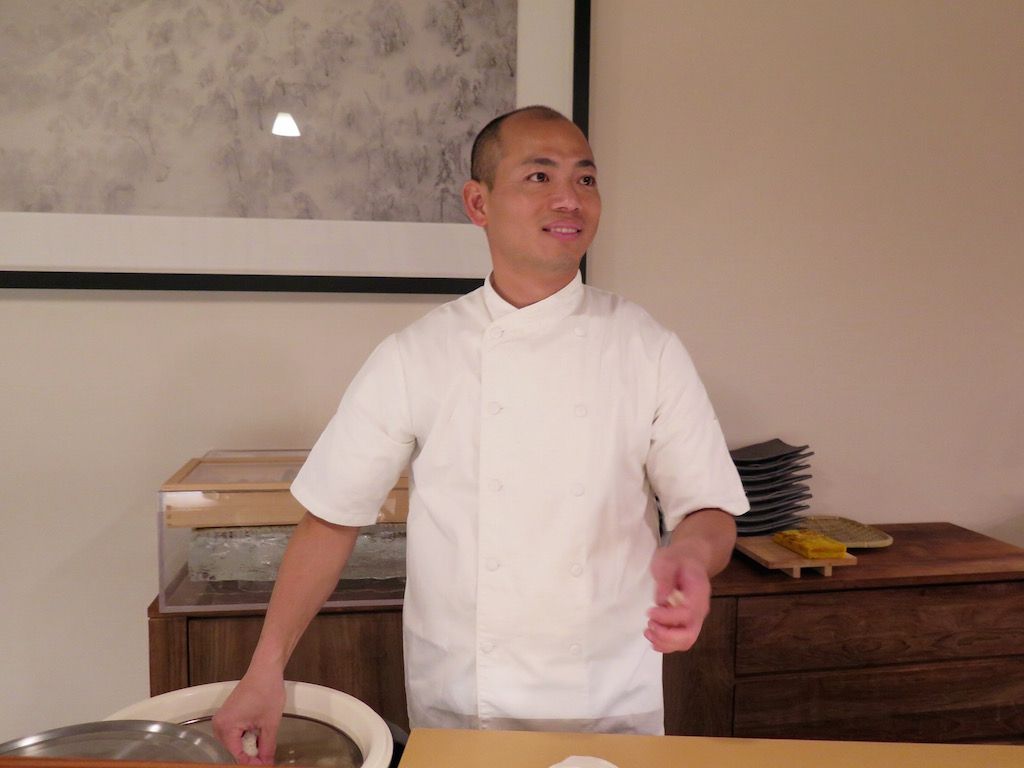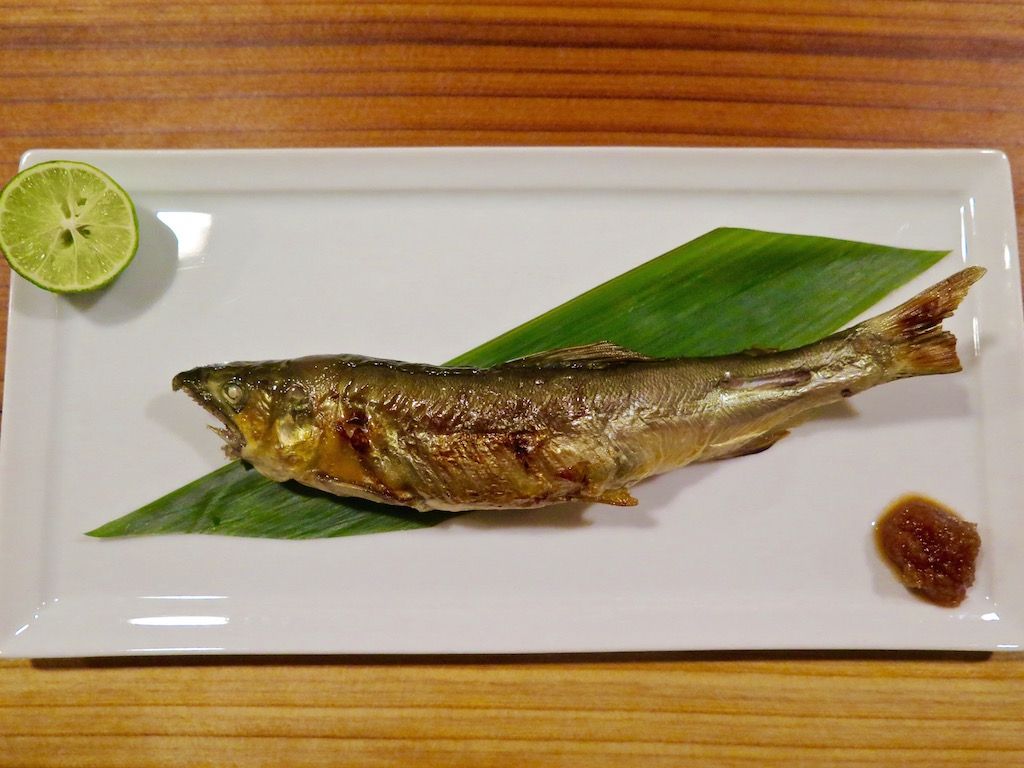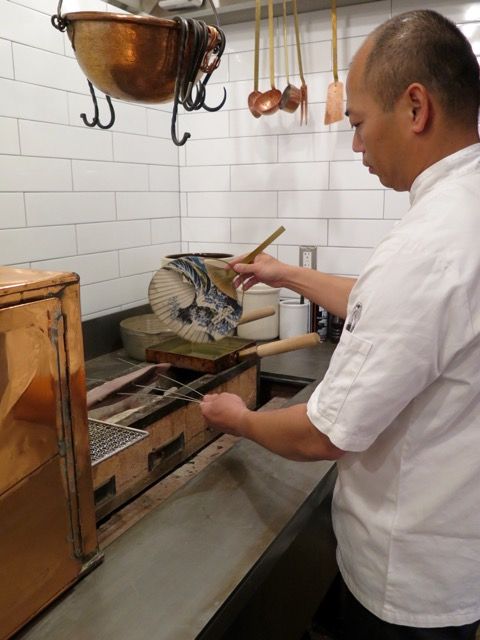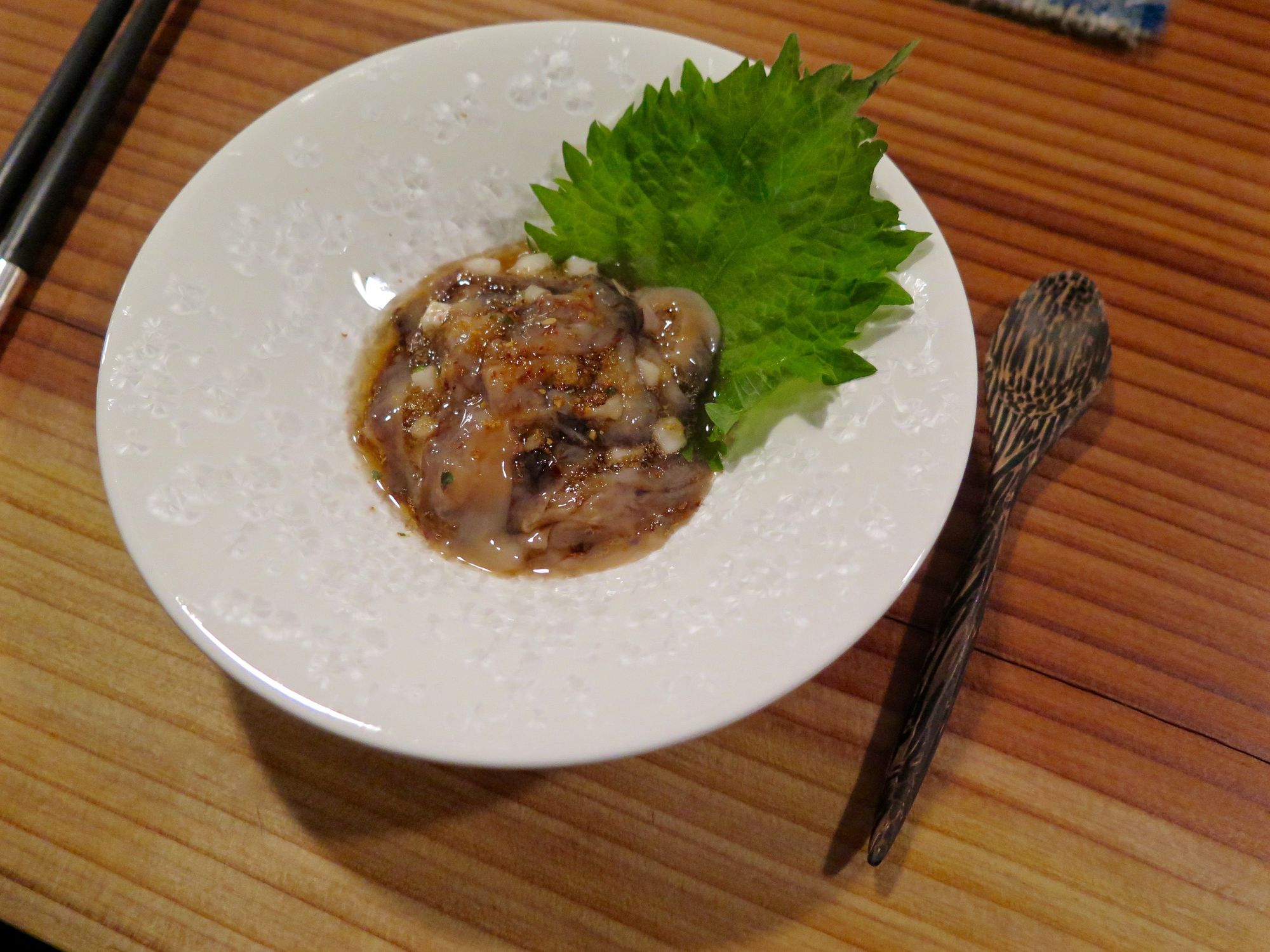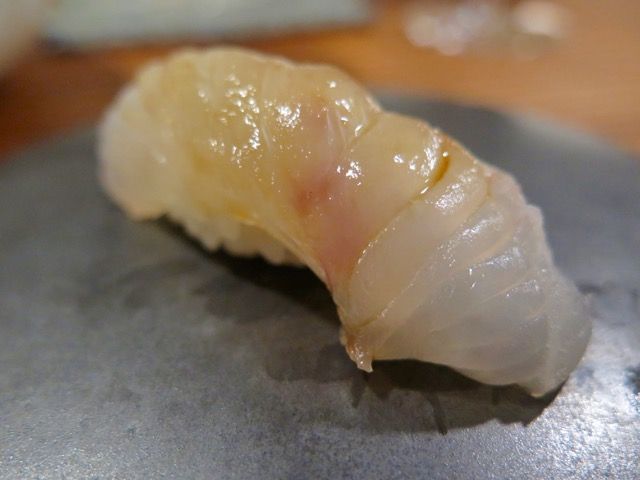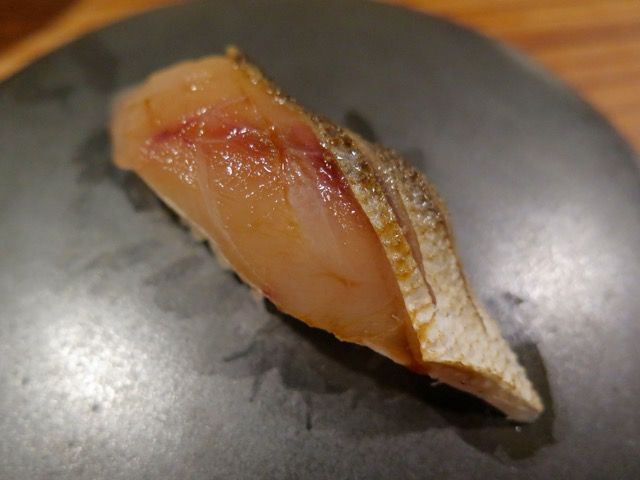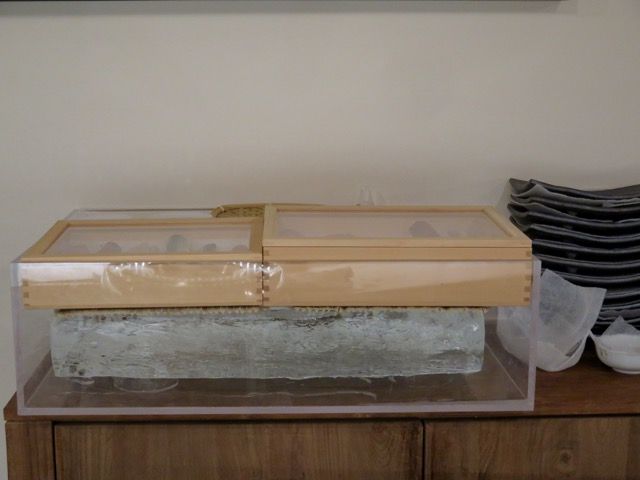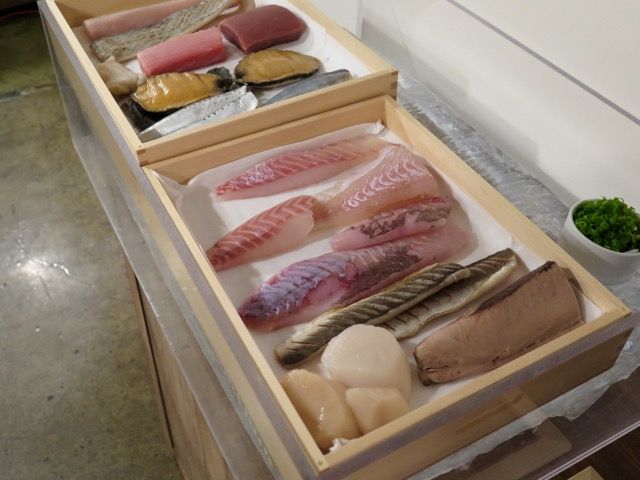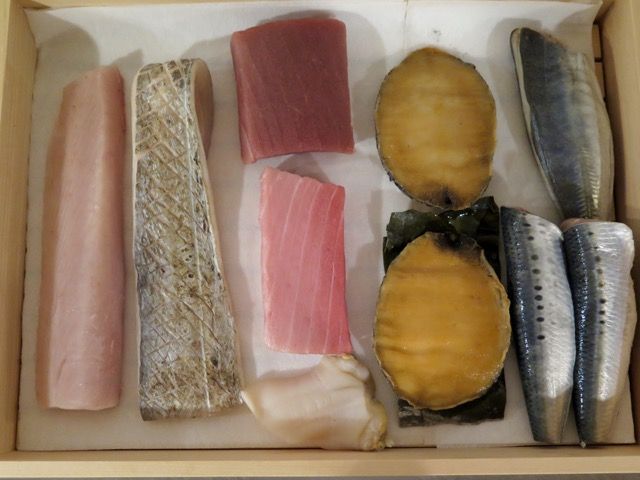San Francisco is a leading force in our nation’s culinary scene—and some would argue the best—but our Achilles’ heel has been our city’s painful lack of a strong sushi game. Honestly, it’s downright mystifying, considering our love of Japanese cuisine, seafood, and pristine ingredients, let alone our strong ties to Japan. We shouldn’t be able to count on one hand the number of local places we think are really good, with greatness up for debate.
Well, right now, it’s time to grow a sixth finger, or start counting on the other hand, because we have a really special place that has arrived on the scene: JIRO SF. But alas, its existence is only temporary—which is why I am writing this piece right now, 24 hours after just one visit, so you can get on it.
Next door to the three-Michelin-starred Saison is their room with a private chef’s counter, a place that I don’t think that many of us have visited. Well, some of you may have, but just the same, I don’t want to diminish the surprise and excitement you’ll feel by sharing too many details about this stylish space. I will say it’s like being led into a secret culinary clubhouse, and you’re going to be pretty thrilled to sit at that gorgeous black walnut counter for the next three or so hours.
Some of you may recognize chef Jiro Lin from his 11 years at Hamano, which is where Saison chef-partner Joshua Skenes befriended him. They talked about doing a project together, and even looked at a couple of spaces, but the size of the places weren’t quite right. For now, Jiro is a guest at the Saison chef’s counter until the end of May 2015, but it’s the kind of experience I wish would be with us for a long time.
Jiro was born in Burma, and his culinary path led him to Japan, where for 11 years he trained extensively at Honatsugi in Kawasaki and in Tokyo at Bikkuri Zuzhi and Maguro Hanamigawa (where he met his master). He came to the U.S. in 2002, working at Blowfish and then Hamano.
He is a man obsessed—about rice, about fish, about ingredients, about seasonality—which is what you need to see in your sushi chef. You want to taste the 24 years of obsession. And here, you do. The omakase experience (which will run around $220) is about sourcing the best fish available at that moment and is a highly personal experience, with a modern kaiseki-like attention to seasonal ingredients. Every cut, seasoning, temperature, flavor, texture, and presentation of each dish feels so very considered, individually and as a whole story.
The counter seats eight people, but the reservations are staggered so Jiro will be able to focus his attention on you (especially when it’s nigiri time), before moving to the next couple or grouping of diners. It’s like you’re at a ball, and you get your turn with the best dancer for the fox-trot, and then the music changes and he waltzes off, leaving you a bit breathless when your time is up.
Our menu started with a jasmine tisane, and while I requested some bubbles (oh, hai, open bottle of Krug with your gold foil top, come to mama) for the start of my beverage pairings, you may be greeted with a Japanese IPA or sake. The pairing is $100, and you know when wine director Mark Bright and his fleet of Saison somms are involved that some special pours will be featured.
The menu’s story unfolded with an array of tsukemono (Japanese pickles); an ichiban dashi with morsels of Japanese red snapper and king crab and fresh bamboo shoot; and a whole ayu (sweet fish) lightly kissed with smoke from its time being lovingly grilled on binchotan.
The course of raw sea cucumber (namako) from Hokkaido—which is cured in light vinegar and served with sanbaizu jelly (which is like ponzu, but is vinegar-based), presented with a crunchy brunoise of kabu (turnip) and a shiso leaf—may give some diners some pause due to its slimy texture, but I enjoyed its mysterious nature, scooping up slippery and cool bites onto a charming little wooden spoon. The dish’s acidity resets your palate after the ayu, preparing it for the quick-fire round of nigiri that will soon be unleashed.
A round ceramic piece the color of graphite with a subtle convex shape is placed in front of you, the landing pad for the upcoming jewels Jiro is about to offer. The opening salvo was a piece of ike-jime tai (snapper killed via a Japanese technique that is both humane and a way to preserve its freshness), accented with notes of dashi shio, key lime, and a nibble from fresh wasabi.
A rapid sequence of nigiri followed: the dense and springy kurosoi (black rockfish from Kyushu) dressed with yuzu and soy, the textured tachiuo (beltfish) with its scored exterior, and creamy sawara (king mackerel dressed with a special soy). We all paused over the slightly sticky and quite sexily translucent hirame kobujime (wild halibut cured with sea kelp), savored the play between the oilier kamasu (barracuda) with the junmai daiginjo that was poured, and then got nudged back to the sensuous zone with supple bluefin tuna from Spain that Jiro aged for two days, followed by decadent chutoro (medium fatty tuna) that was so tender it almost dissolves on your tongue.
The dance of the seven veils (actually, there are more veils than you can even count) continues with infinitely delicate live scallop with a hit of ume salt; fresh katsuo (bonito) topped with grated young ginger bud, with a faint prickle of spice and almost garlicky notes; and mirugai with the tiniest cuts into it.
Fresh iwashi (sardine) from Chiba was positively primal—I felt like a bear swooping my paw into the water and chomping on a raw fish, and then grazing on some ginger and shiso to balance the intensity. The iridescent sheen on the kohada (shad) was mesmerizing, and then a small mound of Jiro’s beautiful rice is layered with pieces of fluffy Hokkaido uni, filling your senses with its delicate salinity.
The piping hot chawan mushi arrives, accented with a light dashi, and just when you think it’s all over, Jiro handed us an ikura temaki (hand roll), the ice cream cone of your dreams made with crisp nori from Japan, and probably the finest ikura I have ever tasted, so firm and magically not overloaded with alcoholic notes from sake (they evaporate it). You feel like a spoiled adult-child on your fur-covered chair, happily and greedily eating your savory cone.
While Jiro is Marine-serious about his craft, sushi nazi he is not. Well, there is one thing (and I know you are not going to ask for soy sauce or wasabi, mmmhmmm): he’d be happy if you’re not talking a lot once your nigiri has been placed in front of you. Eat it while the temperature is what it’s intended to be, oh-so-recently removed from its special case that rests on a block of crystal clear ice encased in Lucite (which prevents the fish from drying out like most refrigerated sushi cases). Taste it while the texture of the rice is as it is supposed to be, freshly pressed from his hands, and then resume your conversation until the next piece stealthily lands in front of you.
Nigiri time runs at a brisk pace, one that will have you savoring a mouthful, and just when you’re sad the flavor is dissipating, there’s another piece of something else intriguing and glistening in front of you. It’s a fantastically gluttonous experience that is simultaneously so elegant, and like many good things, it’s ephemeral. We don’t know how long Jiro’s guest appearance will last, perhaps the end of May, so if you consider yourself a lover of sushi, treat yourself and book a reservation while you can.
The atmosphere isn’t too serious: like Saison, you’ll suddenly hear “Kung Fu Fighting” or “Careless Whisper” on the sound system and find yourself singing along with your neighbor. You’ll also learn a lot from dining at Jiro’s counter, so consider this an investment in your sushi education, which sadly never comes cheap. Do it.
For more images, hop over here.
This review was based on one visit. Bluefin tuna at Jiro SF. All photos: © tablehopper.com.

